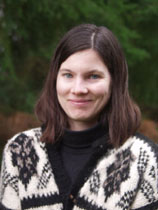
Abstract
Understanding patterns and processes of species diversity in space is a fundamental problem for ecologists and conservationists. Geomorphology underlies many patterns of diversity at a variety of spatial scales, and human disturbance is changing both geomorphic processes and species distributions. However, the relationship between diversity, geomorphology, and anthropogenic change across scales is poorly understood. Better understanding could aid in identification of priority conservation areas. The Caribbean region is a good place to investigate this because it is geomorphologically complex at many scales, it is one of the hotspots of endemism in the world and it has been heavily impacted by human use. By combining field studies with modeling, I propose to examine the distribution of native, endemic, and exotic plant species in the karstic region of Puerto Rico, the relationship of diversity with geomorphology and land use history at multiple scales, and the usefulness of ecological land units as indicators of species distributions. I propose to develop a tool to help identify endemism and species richness hotspots in a complex landscape and to identify characteristics of secondary forests that indicate a site's potential to develop into a diverse forest in the future. This research will contribute directly to The Nature Conservancy's ecoregional plan for the Caribbean, for Puerto Rico in particular, and for other complex tropical areas. It will have broader implications for conservation theory and planning by contributing to a better understanding of patterns of endemism and species richness and linkages across multiple scales.
